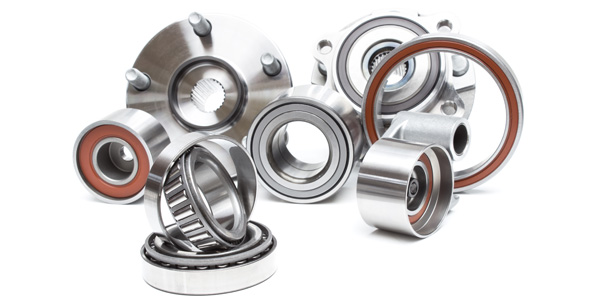
Wheel bearings keep America rolling. The bearings perform a number of important functions, including reducing friction, supporting the weight of the vehicle on the axles and spindles and assisting with wheel alignment.
Most automotive wheel bearings are one of two basic designs: double-row ball bearing or tapered roller bearing. The latter are more often used in heavier vehicles or those that are subjected to higher side loading.
Most wheel bearings in late-model vehicles are part of a sealed hub assembly, but some may be a press-fit cartridge that mounts in the steering knuckle. On older vehicles from many years ago, the wheel bearings are a three-piece design that is serviceable and must be cleaned, inspected and repacked with wheel bearing grease every few years.
Sealed wheel bearings rank right up there with sliced bread as far as being a great invention. Sealed bearings and hub assemblies require zero maintenance, no cleaning, no messy repacking with grease, and often will last upward of 200,000 miles under normal driving conditions. But some don’t go the distance and there often is a reason why.
Double-row ball bearings in front-wheel drive passenger cars are engineered to handle normal driving and cornering loads, not the kind of severe cornering forces that are encountered on a race track. Consequently, if the bearings are pushed beyond their design limits, they usually will fail. We’ve seen this happen on sports cars and performance cars that were used for occasional weekend road racing events or even full-time racing. We’ve also seen it happen on police vehicles that were being used at a Midwest driving school to train law enforcement officers high-speed driving techniques.
Wheel bearing failures also can occur as a result of environmental contamination. We’re talking water, dirt and road salt. The seals that keep contaminants out also are designed for normal driving under normal weather conditions. Most wheel bearings are not designed to operate submerged in water, so driving through hub-deep flood waters or driving off-road through creeks and mud may allow water to get inside the bearings. Extremely cold weather and exposure to high concentrations of road salt in northern climates also increase the risk of water and salt infiltrating the bearing housing. Once this happens, the bearings are doomed and probably will fail.
A bad wheel bearing often will produce a cyclic noise such as a chirp or squeal that changes in proportion to vehicle speed. But sometimes there are no audible clues. Bearing play can be checked by raising a wheel off the ground and spinning it by hand. A good bearing will have little or no measurable play (no wobble in the wheel), and will rotate smoothly and quietly.
If a bearing is loose or making noise, it should be replaced without delay. A wheel bearing failure can be a dangerous event because it may cause the wheel to separate from the vehicle.
Hub assemblies are usually a simple bolt-on replacement, but cartridge-style bearings usually require a press or special tools to remove and install. Serviceable bearings in older vehicles or on trailers usually can be serviced or replaced with hand tools, although some type of driver tool is required if the outer race in the hub needs to be replaced. On the older-style three-piece bearings, all three pieces must be replaced at the same time because they are precision-matched components. New grease seals also are a must to protect the bearings.












